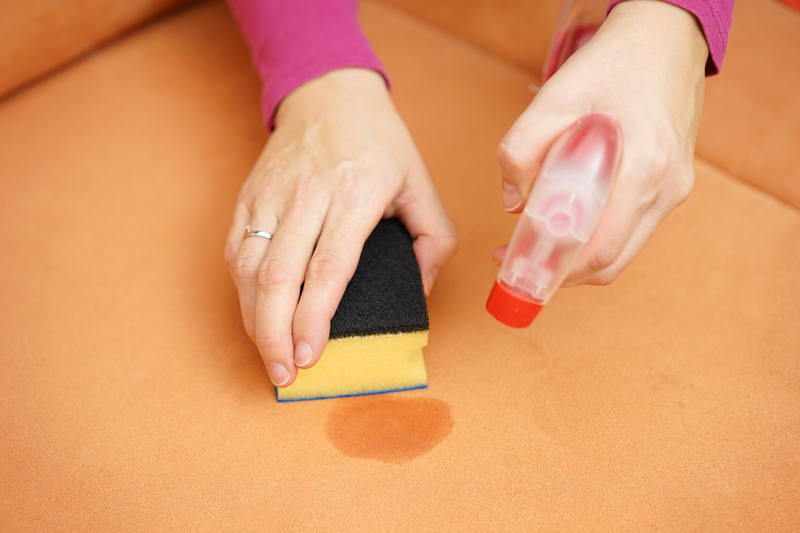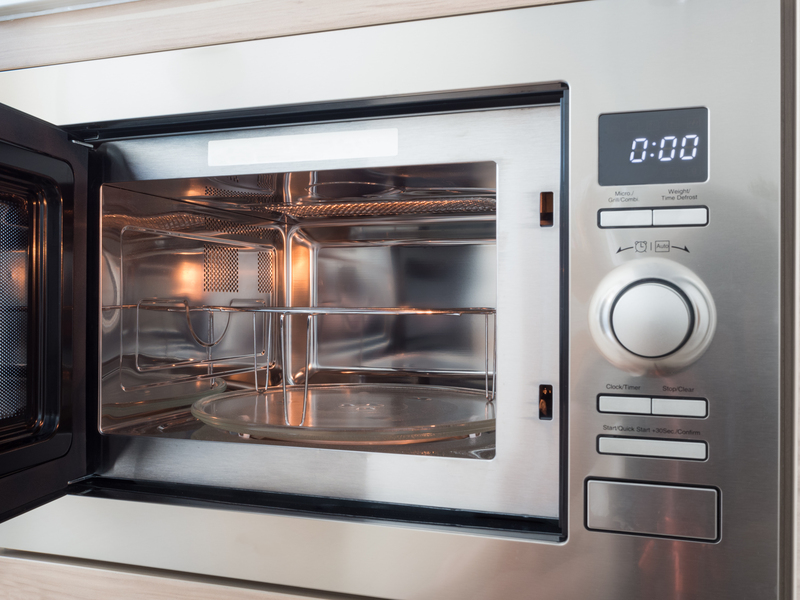Curtain Cleaning: Techniques for a Perfect Finish
Posted on 17/06/2025
Curtain Cleaning: Techniques for a Perfect Finish
Curtains play a pivotal role in home decor, offering style, privacy, and functional insulation. However, as time passes, dust, allergens, odors, and stains can accumulate on your drapes, diminishing their elegance and hampering indoor air quality. Proper curtain cleaning techniques are essential to ensure your window treatments retain their beauty and freshness. In this comprehensive guide, discover curtain cleaning methods, tips for a professional-quality finish, and the best techniques to prolong the life of your curtains.
Why Curtain Cleaning Is Essential
Curtains do more than dress up your windows; they trap airborne particles like dust mites, pollen, pet dander, and even mold spores. Over time, these contaminants can cause allergies, musty odors, and even fabric degradation. Regular curtain cleaning ensures a healthier home environment and helps maintain the fabric's look and feel.
- Enhances indoor air quality
- Prevents fading and discoloration
- Removes allergens and dust
- Prolongs fabric lifespan
- Keeps your decor pristine and inviting

How Often Should Curtains Be Cleaned?
The frequency of curtain cleaning depends on various factors, including fabric type, location, and household circumstances. For busy homes, consider these recommendations:
- Light cleaning (vacuuming or dusting): Once a week
- Deep cleaning (washing or steam): Every 3-6 months
- Spot cleaning: As needed, immediately after spills or stains
Areas exposed to heavy dust, pollutants, or pet activity may require more frequent attention. Formal living spaces and guest rooms may only need semi-annual cleaning.
Pre-Cleaning Preparation
Before diving into curtain cleaning methods, proper preparation is key to achieving a flawless finish:
- Read the care label: Always check the manufacturer's recommendations on fabric care.
- Remove hardware: Take off hooks, rings, and any detachable accessories to prevent snags or damage.
- Shake out dust: Take curtains outdoors and give them a gentle shake to loosen surface dust.
- Test for colorfastness: Dab a small, inconspicuous area with mild detergent and water to test for fabric dye stability.
Top Curtain Cleaning Techniques for a Perfect Finish
1. Vacuuming: Quick and Effective Dust Removal
Regular vacuuming is a simple yet crucial step in maintaining clean curtains. Use a vacuum cleaner with a soft brush attachment to gently remove surface dust and dirt. Work from the top down and be mindful of delicate fabrics.
- Benefits: Prevents dust buildup, reduces allergens, easy to perform weekly
- Pro tip: For velvet or heavy drapes, use low suction to prevent pulling or fabric distortion.
2. Machine Washing: Easy and Thorough for Washable Fabrics
Many curtains, especially those made of cotton, polyester, or blends, can be machine washed. Always check the label before proceeding.
- Remove hooks and ties before loading curtains into the washer.
- Use a gentle cycle with mild, unscented detergent.
- Cold water helps preserve colors and prevents shrinkage.
- Wash curtains separately to avoid tangling with other clothing items.
- Dry according to label instructions--some fabrics require air drying to prevent shrinking.
Tip: Place sheer or lace curtains in a mesh laundry bag for added protection.
3. Hand Washing: Gentle Care for Delicate Curtains
If your curtains are made of delicate fabrics such as silk, lace, or fine wool, hand washing is best:
- Fill a clean tub or basin with lukewarm water and a small amount of mild detergent.
- Gently agitate the fabric--avoid wringing or twisting.
- Rinse thoroughly in cool water until all soap is removed.
- Press out excess water by rolling the curtain in a towel.
- Lay flat or hang to air dry, straightening the edges for a crisp finish.
4. Steam Cleaning: Quick and Efficient Deep Cleaning
A steam cleaner offers an excellent option for deep-cleaning curtains without taking them down. This technique removes odors, kills bacteria, and refreshes fabric fibers.
- Start from the top and work downward in slow, even strokes.
- Keep the steam nozzle several inches from the fabric to prevent water spotting.
- Allow ventilation to help curtains dry quickly.
Steam cleaning is safe for many synthetic and heavy fabrics, but always check the care label before proceeding.
5. Dry Cleaning: The Professional Choice for Specialty Curtains
Some curtain fabrics, such as velvet, silk, brocade, or those with intricate embroidery and linings, are labelled dry clean only. Take these curtains to a trusted professional dry cleaner. Attempting to wash dry-clean-only fabrics at home can result in permanent damage and shrinkage.
- Professional cleaning ensures a perfect finish
- Removes tough stains and revitalizes texture
- Keeps warranties intact
Spot Cleaning: Removing Stains and Odors
Unexpected spills or stains are best addressed quickly to prevent permanent marks. Here's how to spot clean curtains effectively:
- Blot the stain gently with a clean, dry cloth to absorb excess moisture.
- Mix a small amount of mild liquid detergent with lukewarm water.
- Dab the stained area lightly--never rub, as this can spread the stain.
- Use a clean, damp cloth to blot away soap residue.
- For persistent odors, sprinkle baking soda on the area, let it sit for 15 minutes, then vacuum.
Note: Always test cleaning solutions on a small, hidden portion of the curtain first.
Drying Curtains for a Wrinkle-Free Finish
How you dry your curtains is critical to attaining a smooth, unblemished appearance. Follow these tips for drying curtains after cleaning:
- Air drying: Hang curtains back on the rod to air dry--this helps them regain their natural shape and avoids creases.
- Tumble drying: If the care label permits, dry curtains on low heat and remove promptly when slightly damp to avoid wrinkles.
- Ironing: Use an iron or handheld steamer (on the appropriate heat setting) to eliminate any creases. For delicate fabrics, always use a pressing cloth.
How to Maintain Curtains Between Cleanings
Maintaining curtain cleanliness doesn't stop after a deep clean. Adopt these proactive techniques for long-lasting results:
- Weekly vacuuming with a brush attachment
- Keep windows closed during windy or dusty conditions
- Air out curtains by opening windows or using fans
- Address stains and spills promptly before they set
- Consider rotating curtains periodically to even out exposure to sunlight and pollutants
Tips for Specific Curtain Fabrics
Cotton and Polyester Curtains
- Machine washable--use mild detergent and gentle cycles.
- Air dry or tumble dry low for best results.
- Warm iron if necessary to remove wrinkles.
Silk and Linen Curtains
- Usually dry clean only--avoid water exposure to prevent shrinking and color fading.
- Protect from direct sunlight.
- Handle with extra care--use soft hosiery bags if machine cleaning is allowed.
Velvet and Heavy Drapes
- Often best professional dry cleaned.
- Use a clothes brush or gentle vacuum with low suction between cleanings.
- Steam cleaning can freshen, but avoid saturating the pile.
Lace and Sheer Curtains
- Hand wash or use a delicate cycle in a mesh laundry bag.
- Air dry flat or hang immediately to prevent distortion.
- Iron on the lowest setting or use a handheld steamer for a crisp finish.
Environmental and Health Benefits of a Perfect Curtain Clean
Keeping curtains clean yields multiple benefits beyond aesthetics:
- Reduces allergens and respiratory irritants, making your home safer for children and those with sensitivities.
- Eliminates dust mites and bacteria, contributing to a healthier indoor environment.
- Prevents mold growth especially in humid climates, by ensuring fabrics are clean and dry.
- Sustains energy efficiency, as clean curtains perform better in insulating your home from cold and heat.
Curtain Cleaning Mistakes to Avoid
For a truly perfect curtain finish, avoid these common mistakes:
- Ignoring care labels: Always adhere to manufacturer instructions.
- Overloading the washing machine: This prevents thorough cleaning and can damage fabrics.
- Using harsh chemicals or bleach: These can fade fabric colors and weaken fibers.
- Tumble drying on high heat: Can cause shrinking or melting, especially with synthetic blends.
- Hanging damp curtains in poor ventilated areas: Promotes mildew and musty odors.
When to Call Professional Curtain Cleaners
Some situations call for expert care. Consider professional cleaning when:
- Your curtains are "dry clean only"
- There are stubborn stains, odors, or smoke damage
- Specialty fabrics or custom draperies are involved
- Large, heavy curtains are too cumbersome for home washers
Professional cleaners use industrial equipment, solvent-based cleaners, and controlled drying processes, ensuring your curtains return in immaculate condition.

Final Thoughts: Achieve a Flawless Curtain Finish
A well-executed curtain cleaning routine can revitalize your living space, contribute to a healthier indoor environment, and protect your decorative investment. By following these curtain cleaning techniques, equipping yourself with the right tools, and practicing regular maintenance, you'll enjoy beautiful, fresh curtains every season.
Whether you're looking to freshen up bedroom drapes, living room sheers, or specialty fabrics, the path to a professional-quality result starts with care, consistency, and knowledge. With the strategies and insights shared here, you're well-equipped to deliver that perfect curtain finish--every time!
Frequently Asked Questions About Curtain Cleaning
- Can I machine wash all curtains?
No, only curtains labeled as machine-washable should be put in a washer. Silk, velvet, and lined curtains often require dry cleaning. - How do I remove wrinkles from curtains?
Hang them damp and use gravity, or lightly steam and iron as fabric allows. - What's the easiest way to freshen curtains between washes?
Vacuum regularly and open windows for ventilation. Spraying with a fabric refresher or using a steamer also helps. - How do I clean blackout curtains?
Vacuum regularly and spot-clean as recommended. Most blackout linings require dry cleaning. - Can curtain cleaning help with allergies?
Absolutely! Reducing dust, pet dander, and pollen on curtains makes your home healthier for allergy sufferers.
For more insights on curtain care and home cleaning solutions, stay tuned to our blog!




